When looking at investment options, it’s interesting to see gold’s price jump from under $1,300 in early 2019 to almost $2,100 in mid-2020 during the COVID-19 pandemic1. Bitcoin’s price also saw a big rise, hitting about $61,000 in April 2021 and reaching $75,000 on March 14, 2024, after Bitcoin Spot ETFs were approved1. Both gold and cryptocurrency are now seen as attractive investments. We’ll look at their differences, including their past performance, market trends, and what affects their value. This will help us decide which is the better choice.
The investment scene in India is changing. Gold has long been seen as a safe choice against market drops. On the other hand, cryptocurrency is a new option1.
Table of Contents
Key Takeaways
- Gold and cryptocurrency are two different investment assets with unique characteristics.
- Gold’s price has historically been stable, while cryptocurrency prices can be volatile1.
- Bitcoin’s utility is currently limited to digital currency and speculative investments, while gold has a long history of varied applications1.
- Investors should consider factors such as liquidity, security, and regulatory oversight when choosing between gold and cryptocurrency1.
- Cryptocurrency investment options, such as Bitcoin and Ethereum, offer a new alternative to traditional assets like gold2.
- The use of stablecoins like Tether can provide stability similar to fiat currency, maintaining value compared to the volatility of cryptocurrencies like Bitcoin1.
We’ll explore the world of gold and cryptocurrency. We’ll look at their investment qualities, risks, and market trends. This will give us a full comparison of these two assets. It will help investors make smart choices for their portfolios, weighing the pros and cons of each.
Understanding Traditional and Digital Assets
We’re seeing a big change in how people invest. Gold is being compared to digital assets like cryptocurrency. The global cryptocurrency market is about $2 trillion, with Bitcoin making up 45% of that3. On the other hand, traditional markets like stocks are worth over $100 trillion, showing a big size gap3.
Gold has been a valuable asset for centuries. But cryptocurrency has become popular for its high returns. Bitcoin, for example, has grown by over 200% in the last decade, beating traditional investments like the S&P 5003. It’s also interesting to see that Bitcoin has outperformed gold for the third year in a row4.
Here are some key differences between traditional and digital assets:
- Volatility: Cryptocurrencies are known for their high volatility, with daily price swings of 10-20%3.
- Liquidity: Cryptocurrencies offer near-instant liquidity, as they can be traded 24/7 on global exchanges3.
- Accessibility: Cryptocurrencies are accessible to anyone with internet access, making them inclusive for global investors3.
As we explore both traditional and digital assets, understanding their implications is key. Whether you choose gold or cryptocurrency, staying informed and adapting to market changes is vital5.
| Asset | Market Cap | Volatility |
|---|---|---|
| Gold | $100 trillion | Low |
| Cryptocurrency | $2 trillion | High |
The Historical Significance of Gold in Indian Markets
Gold has been important in Indian markets for centuries. It’s seen as a safe investment against inflation and economic ups and downs6. During tough times, gold has done better than other investments7.
Gold’s return from 1971 to 2023 was 7.9%, less than the S&P 500’s 10.8%7. This shows gold’s value in diversifying a portfolio, with a low correlation of -0.27.
In India, gold is more than just an investment. It’s a symbol of wealth and good fortune6. The country is among the biggest gold consumers worldwide6. Today, gold costs around Rs 47,487 per 10 gm, having reached Rs 56,000 in August last year6.
Investment in cryptocurrencies in India has also seen a big jump. It went from $200 million to nearly $40 billion in a year6.
The following table highlights the historical significance of gold in Indian markets:
| Year | Gold Price (Rs/10 gm) | Return (%) |
|---|---|---|
| 2020 | 50,000 | 24.59 |
| 2021 | 48,000 | 14.9 |
| 2022 | 47,487 | 6.0 |
Gold’s value in Indian markets is clear. It’s a reliable store of wealth and a safe choice against economic risks7. As India’s economy grows, so will the demand for gold. This is due to its cultural and historical importance6.
The Rise of Cryptocurrency in Modern Investing
Cryptocurrency has become a big part of modern investing. Bitcoin is a top example of a digital asset that many know about8. It uses blockchain technology for safe and decentralized transactions, drawing in investors8.
Cryptocurrency offers fast and cheap transactions. It also has a system that isn’t controlled by one person or group8. But, it has downsides like price swings and high energy use for mining8.
Cryptocurrency is known for being decentralized, having a limited supply, and using blockchain for secure deals8. As it grows, it will likely be more key in modern investing8.
People can buy cryptocurrency on exchanges or through brokerages. It’s kept in digital wallets8. The rules for cryptocurrency are changing, with each country handling it differently9.
Gold vs. Cryptocurrency: A Direct Comparison
Investing in gold and cryptocurrency requires understanding their differences and similarities. Gold has often done better than other investments during tough economic times10. Cryptocurrencies, on the other hand, can see huge price swings, going up and down quickly11.
Looking at their role as a store of value is also important. Gold has kept its value for centuries, protecting against inflation and currency changes10. Cryptocurrencies, while seeing big price jumps in 2020, are much more unpredictable than gold12. Here’s a table showing some main differences between gold and cryptocurrency:
| Asset | Volatility | Store of Value |
|---|---|---|
| Gold | Low | High |
| Cryptocurrency | High | Low |
In summary, gold and cryptocurrency have different investment traits. Gold is a steady asset with a long history of keeping its value. Cryptocurrency, while riskier, has the chance for big gains11. Investors should think about these points when choosing between gold and cryptocurrency12.
Investment Characteristics of Gold
Gold is a standout choice for investments because of its unique traits. It has kept its value for centuries, providing stability during tough times13. This makes it a reliable choice for keeping wealth safe. The World Gold Council says gold has outperformed most other investments during economic uncertainty13.
Gold’s physical form is a big plus for investors. It offers a sense of security during financial ups and downs13. You can store gold in bars, coins, or jewelry. This physical aspect also makes it easy to buy and sell.
Physical Storage and Security
Keeping gold safe is key. Investors can store it in vaults or safe deposit boxes to avoid theft or damage. This security is essential to keep gold’s value intact.
Liquidity Factors
Gold is also known for its liquidity. It’s widely accepted and can be easily turned into cash13. This is important during economic downturns, as investors can quickly sell gold. Its liquidity also makes it a good choice for diversifying portfolios.
Price Stability Patterns
Gold’s price tends to stay stable, even in tough times. It often goes up during economic shocks, making it a good hedge against inflation and currency changes13. Experts say mixing gold with other assets, like Bitcoin, can diversify and protect against market risks14.
| Investment Characteristic | Description |
|---|---|
| Physical Storage | Gold’s physical form provides unique advantages and reassurance during financial instability |
| Liquidity | Gold is widely recognized and accepted as a valuable asset, making it easily convertible to cash |
| Price Stability | Gold often appreciates during economic shocks, serving as a reliable hedge against inflation and currency fluctuations |
Cryptocurrency Investment Features
We look at several things when we think about cryptocurrency as an investment. These include its digital form, how easy it is to sell, and how much it can change in value. Bitcoin, for example, is rare, with only 21 million coins available. This makes it very valuable because it’s hard to find15.
Gold also gets its value from being rare. There’s not much gold left in the world to mine15.
Cryptocurrency has special qualities for investors. It’s digital and easy to trade. Bitcoin has grown in value by 47% over 10 years, beating gold and the US dollar15. Gold, on the other hand, has a steady supply, but it’s not growing as fast as it used to15.
The table below shows how cryptocurrency and gold compare as investments:
| Asset | Scarcity | Liquidity | Volatility |
|---|---|---|---|
| Cryptocurrency (Bitcoin) | 21 million coin cap | High | High |
| Gold | Limited availability of deposits | Medium | Low |
In summary, cryptocurrency has unique qualities that set it apart from gold. As the world of digital assets grows, it’s important to weigh the pros and cons of investing in cryptocurrency116.

Risk Assessment and Volatility Factors
Investing in gold or cryptocurrency requires careful consideration of risks and volatility. The cryptocurrency market is known for its fast price changes17. It faces issues like market manipulation, security risks, and price swings17.
Looking at cryptocurrency, we see big price swings. Bitcoin’s price can change a lot, with an annual volatility of 81%18. This is due to market tricks and security threats. Gold, on the other hand, is seen as a safer choice but can also see price changes.
When evaluating cryptocurrency risks, consider these points:
- Market manipulation: Cryptocurrency markets are small and not well-regulated, making them vulnerable to manipulation17.
- Security risks: There’s a big risk of hacking and theft in cryptocurrency investments17.
- Price volatility: Cryptocurrency prices can change quickly, leading to big losses if not managed well18.
In summary, a detailed risk assessment is key for gold or cryptocurrency investments. Knowing the volatility and security risks helps investors make better choices and reduce risk1817.
Regulatory Environment and Legal Considerations
The rules and laws around gold and cryptocurrency differ by country. In the U.S., cryptocurrencies are seen as capital assets. This means investors must pay taxes on their profits19. In India, starting in 2022, there’s a 30% tax on making money from virtual digital assets20.
Important things to think about include:
- Security risks: The Ethereum blockchain had a flaw that could have stolen $250 million19.
- Tax framework: India’s Ministry of Finance is working on a tax plan for cryptocurrencies to fight illegal activities20.
- Regulating authorities: In India, the Reserve Bank of India, Ministry of Finance, and Securities and Exchange Board of India oversee cryptocurrency20.
It’s key to keep up with the rules and laws of gold and cryptocurrency to make smart choices. The regulatory environment changes often. Investors need to know the legal considerations to avoid risks.
Investors should also think about the differences between gold and cryptocurrency. Gold is a traditional investment, while cryptocurrency is digital and not backed by anything physical19. Knowing these differences helps in making better investment choices in the regulatory environment and legal considerations of gold and cryptocurrency.
| Country | Tax Rate | Regulating Authorities |
|---|---|---|
| United States | Capital gains tax | IRS, SEC |
| India | 30% flat rate | Reserve Bank of India, Ministry of Finance, SEBI |
Portfolio Integration Strategies
Asset allocation is key in portfolio integration. It means spreading investments across different types to lower risk and boost returns. Gold and cryptocurrency help diversify a portfolio21. The second web source says diversification is vital, and gold and cryptocurrency can help21.
A diversified portfolio can cut down on risk and possibly increase returns. This is done by mixing different assets for a balanced portfolio. Asset allocation models help figure out the best mix of assets. For instance, a portfolio might include gold, cryptocurrency, and other assets for a balanced risk and return mix.
Some benefits of diversification include:
- Reduced risk: Spreading investments across different asset classes can lower the risk of losses.
- Increased possible returns: A diversified portfolio might earn higher returns than one with just one asset class.
- Improved portfolio integration: Diversification helps create a balanced portfolio that can better handle market changes.
By looking at portfolio integration, asset allocation, and diversification, investors can craft a balanced and effective strategy. This approach helps reduce risk and increase possible returns, making it a critical part of investment planning22.
| Asset Class | Risk Level | Potential Returns |
|---|---|---|
| Gold | Low | 5-7% |
| Cryptocurrency | High | 10-20% |
| Other Assets | Medium | 5-10% |
Market Accessibility and Trading Options
Investing in gold and cryptocurrency involves understanding market accessibility and trading options. Gold has kept its value for centuries, with a volatility of 10-15% annually23. On the other hand, cryptocurrency, like Bitcoin, has seen rapid growth with big price swings24. This makes cryptocurrencies a risky but potentially rewarding investment24.
Gold is easy to trade through established markets24. Cryptocurrency, though, offers fast transactions on digital exchanges with varying liquidity levels24. By 2021, the cryptocurrency market was worth $2.6 trillion25. Yet, cryptocurrency hedge funds often ask for over $100,000 from experienced investors25, limiting access for many.
Trading gold and cryptocurrency differ significantly. Gold can be traded physically, boosting its liquidity through commodities exchanges and dealer networks23. Bitcoin, traded 24/7 on cryptocurrency exchanges, offers high liquidity and global transactions without intermediaries23. As markets change, knowing the trading options and market accessibility of gold and cryptocurrency is key to smart investing.
In conclusion, the market accessibility and trading options for gold and cryptocurrency are unique and need careful thought. By grasping the unique traits of each asset, investors can make wise choices in the complex world of gold and cryptocurrency investing242523.
Future Outlook and Market Predictions
The future of gold and cryptocurrency is uncertain, with many predictions and scenarios26. Gold has seen stable growth over the last decade, unlike Bitcoin’s wild swings27. Investing in Bitcoin should wait until its price drops by more than 50% from its peak to lower risks27.
Several factors will shape the future of these assets, including global tensions and economic changes. Gold often goes up when currencies fall, acting as a shield against inflation27. Bitcoin, on the other hand, is very volatile and can be greatly affected by economic shifts27. The US election on November 5, 2024, might sway investments in both Bitcoin and Gold27.
When making predictions, consider these key points:
- Geopolitical tensions and rising oil prices make gold more attractive as a safe haven27
- Bitcoin is nearing a critical point in its fifth attempt to break a pattern, with a breakout expected to spark a rise27
- Gold’s price jump in 2024 has it at a key spot, with a quarterly break and close above $3,000 possibly starting another rally27
The future of gold and cryptocurrency will hinge on various predictions and scenarios26. As investors, staying updated and adjusting to market changes is key to making smart choices about investing in gold and cryptocurrency.
Tax Implications and Financial Planning
Investing in gold and cryptocurrency comes with tax considerations and planning strategies. In India, gains from trading cryptocurrencies face a 30% tax plus a 4% cess under Section 115BBH28. Also, a 1% Tax Deducted at Source (TDS) is applied on all sell transactions of Virtual Digital Assets (VDAs), including cryptocurrencies and NFTs, from July 1, 202228.
Investors in gold need to know the tax rules for buying and selling physical gold. On the other hand, cryptocurrency gains are taxed at a flat 30% rate, regardless of the holding period28. To reduce taxes, getting advice from a financial advisor is wise. They can help craft a personalized financial plan. Important things to think about include:
- Income tax brackets: Anyone earning over ₹2.5 lakh must pay income tax in India29.
- Capital gains tax: Short-term capital gains tax (STCG) is for investments held for less than three years, taxed the same as income29.
- Tax deductions: Losses from crypto investments can be used to offset future income with the right advice29.
Knowing the tax rules and planning strategies for gold and cryptocurrency can help investors. They can make smart choices to lower their taxes and increase their earnings. It’s vital to keep up with tax laws and regulations, like the 1% TDS for crypto in India, starting July 1, 202228.

Conclusion
As we wrap up our look at gold and cryptocurrency, it’s clear they each have their own special place in investing. Gold is known for its stability and easy-to-sell nature30. On the other hand, cryptocurrencies like Bitcoin are seen as a new and exciting option for those looking for big gains30.
Choosing between gold and cryptocurrency depends on what you want to achieve with your money31. If you’re looking for a mix, combining both can be a smart move30. This way, you get the best of both worlds: gold’s steady value and the chance for cryptocurrencies to grow31.
As the world of finance keeps changing, it’s key to stay up-to-date and do your homework30. The story of gold and cryptocurrency is just beginning. By knowing what each offers, you can be ready to take advantage of future chances31.
FAQ
What are the key differences between gold and cryptocurrency as investment assets?
Gold is a traditional, physical asset. Cryptocurrency is a digital asset based on blockchain. Gold has a long history as a store of value. Cryptocurrency is newer and more volatile.
How have gold and cryptocurrency performed historically in terms of market trends and value?
Gold has been stable and reliable, with value changes based on the economy. Cryptocurrency has seen big swings, with value rising and falling fast.
What role does gold play in the Indian market, and how does it compare to cryptocurrency?
Gold is culturally significant and widely traded in India. It’s often used as a hedge against inflation. Cryptocurrency is newer in India, with mixed adoption and performance compared to gold.
How does bitcoin compare to gold as a digital store of value?
Bitcoin is called “digital gold” for its scarcity and decentralization. But, its volatility and risks are different from gold’s stability.
What are the key investment characteristics of gold and cryptocurrency?
Gold is known for its physical storage, liquidity, and stability. Cryptocurrency is a digital asset with volatility and accessibility.
What are the risk factors associated with investing in gold and cryptocurrency?
Gold risks include market manipulation. Cryptocurrency faces security risks and high price swings. Investors should weigh these risks when choosing investments.
How do the regulatory environments and legal considerations differ for gold and cryptocurrency investments?
Gold is well-established and regulated. Cryptocurrency’s legal and regulatory landscape is evolving, with varying oversight and acceptance.
How can investors integrate gold and cryptocurrency into their portfolios, and what are the possible diversification benefits?
Investors can use asset allocation models to include both gold and cryptocurrency. This depends on their risk tolerance and investment goals.
What are the market accessibility and trading options for gold and cryptocurrency investors?
Gold can be traded through physical markets, futures, and ETFs. Cryptocurrency can be bought and sold on digital exchanges and platforms.
What is the future outlook and market predictions for gold and cryptocurrency?
Gold and cryptocurrency’s future will depend on global economics, regulations, and technology. Investors should stay updated on trends and projections.
What are the tax implications and financial planning considerations for investors in gold and cryptocurrency?
Investors in gold and cryptocurrency should know the tax laws and financial planning strategies. The regulatory landscape varies across jurisdictions.





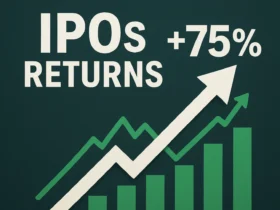
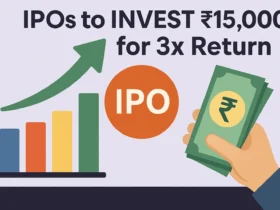

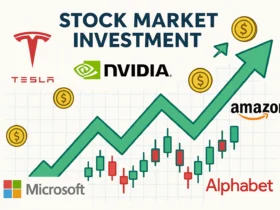
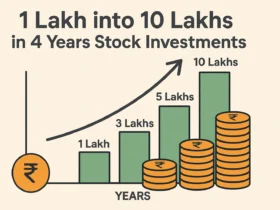








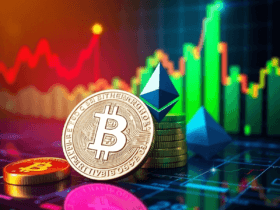
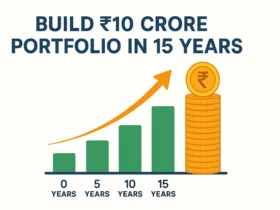
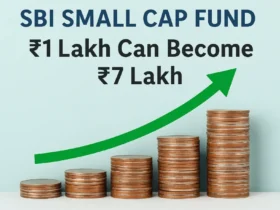

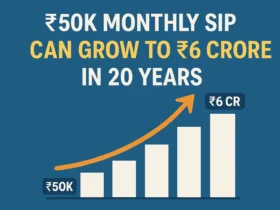
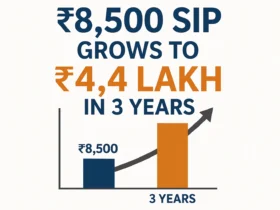

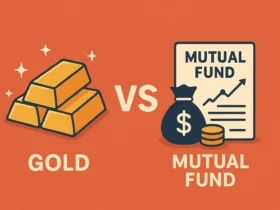

2 Comments